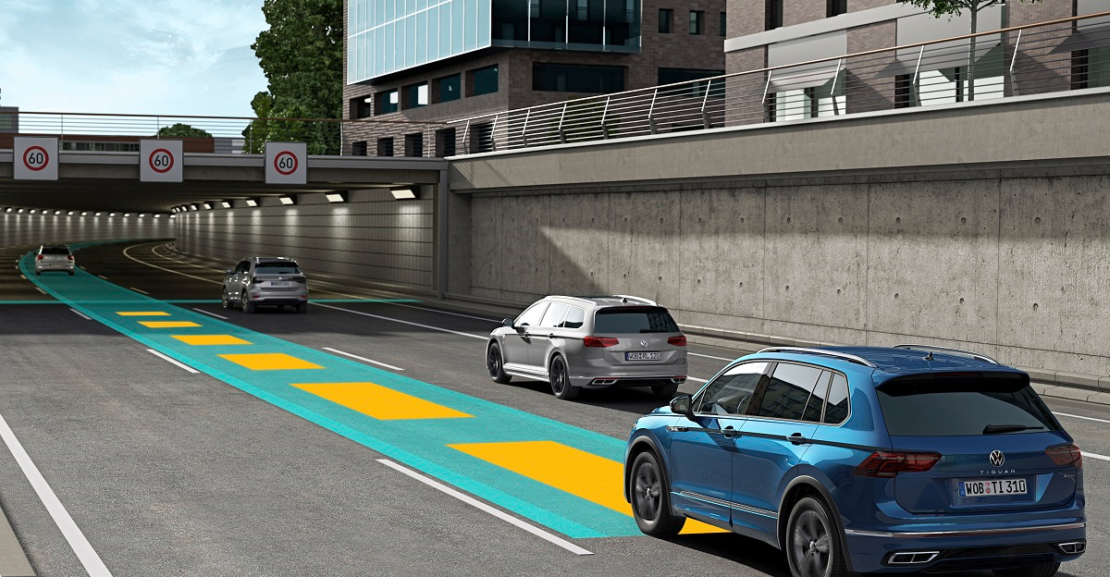WHAT IS VOLKSWAGEN TRAVEL ASSIST?
Advanced driver assistance systems (ADAS) have emerged as a pivotal element in enhancing vehicle safety and promoting stress-free driving. These cutting-edge technologies act as companions, not only alerting the driver to potential hazards but, in numerous instances, executing corrective actions via steering, braking, and acceleration to prevent accidents entirely. A prime example is Volkswagen’s Travel Assist feature, a sophisticated system offering both lateral and longitudinal guidance. This feature significantly enhances the safety of highway driving, providing reassurance during routine commutes and extended journeys.
HOW DOES VOLKSWAGEN TRAVEL ASSIST WORK?
Volkswagen’s Travel Assist comprises a suite of Advanced Driver Assistance Systems (ADAS) that facilitates Level 2 autonomous driving, akin to Ford’s BlueCruise, GM’s Ultra Cruise, and Tesla’s Handsfree systems. This comprehensive package integrates adaptive cruise control, lane guidance technology, and an Emergency Assist feature, all leveraging data collected by cameras, radar, and sensors. Consequently, the vehicle gains the capability to autonomously navigate highways to a certain extent.
When activated, Travel Assist assumes control over acceleration, braking, and steering functions. Its primary objective is to keep the vehicle centered within its lane while actively managing safe following distances from other vehicles, operating effectively at speeds up to 130 miles per hour.
Initiating Travel Assist involves satisfying two prerequisites:
- The driver must activate adaptive cruise control.
- The vehicle must be traveling at a speed exceeding 20 mph.
Upon meeting these criteria, the driver can engage Travel Assist by pressing a designated button on the steering controls. A green symbol on the instrument panel signals that the system is active.
Deactivating the system can be accomplished by pressing the same button or gently applying pressure to the brake pedal. To reactivate, the driver needs to accelerate to the desired speed and press the Travel Assist button once again.
WHAT IS ADAPTIVE LANE GUIDANCE?
Lane guidance technology plays a pivotal role in Volkswagen’s Travel Assist system, and while the concept of lane guidance itself is not groundbreaking, its integration into the comprehensive Travel Assist system enhances its overall effectiveness. The primary objective of this technology is to prevent a vehicle from inadvertently encroaching into the path of another vehicle traveling in the same direction.
In a general sense, conventional lane-keeping assistance technology, which is a component of many Advanced Driver Assistance Systems (ADAS), utilizes the vehicle’s cameras and sensors to monitor road lines. This allows the system to detect when a driver unintentionally starts to drift out of the current lane. While it provides feedback through audio, video, and haptic signals, it does not autonomously correct the vehicle’s path. Instead, it alerts the driver to take corrective action.
Volkswagen’s Adaptive Lane Guidance takes a step further by assuming a degree of automatic control over steering. The system continuously makes minor steering adjustments to ensure the vehicle stays centered within its lane. However, the driver retains the ability to assume full control of steering at any moment and is required to place their hands on the wheel periodically to signal attentiveness to the road.
The system accommodates lane changes in the usual manner. The driver indicates their intention to merge into another lane by using the turn signal. At this point, the system relinquishes control, and the driver takes complete charge of the steering wheel.
WHAT IS EMERGENCY ASSIST?
Emergency Assist constitutes a vital component of the Travel Assist system. While Travel Assist excels at maintaining lane position and ensuring safe distances from surrounding vehicles, it operates within the framework of Level 2 autonomy, classifying it as a semi-autonomous system. Consequently, it requires constant driver involvement, with hands on the steering wheel at all times.
The primary role of Emergency Assist is to intervene if the driver becomes unresponsive due to fatigue or illness, serving as a fail-safe mechanism. The system’s activation depends on the duration of the driver’s inactivity. Initially, Emergency Assist serves as a reminder, displaying messages on the dashboard prompting the driver to regain control of the steering wheel. If the system detects a prolonged absence of driver input, the message turns red, accompanied by an audible warning to attract the driver’s attention.
Should the driver remain unresponsive, Emergency Assist takes decisive action by applying the brakes and gradually decelerating the vehicle while keeping it within its current lane. If the driver fails to resume control of the steering wheel, the system continues slowing the car until it comes to a complete stop. Upon stopping, Emergency Assist activates the vehicle’s hazard lights.
Despite Travel Assist being classified as Level 2 autonomy, the Emergency Assist function temporarily assumes complete control of the vehicle, aiming to prevent potential accidents by bringing the car to a halt if the driver becomes unable to maintain control.

